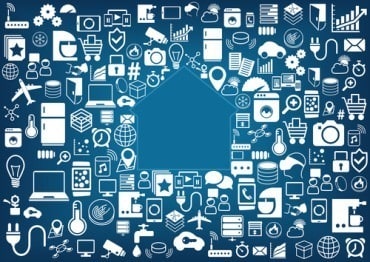HPE Edgeline IoT Systems and Aruba Sensors bring edge computing to the IoT.
Hewlett Packard Enterprise has announced the roll out of new Internet of Things systems and networking tools that will allow customers to more efficiently collect and analyze data.
In a Dec 2 announcement, HPE introduced the new HPE Edgeline IoT Systems that bring IoT to the edge for faster data collection, reduced bandwidth demands and speedier insights. Part of the company’s partnership with Intel, customers can choose from rugged, mobile or rack-mounted versions and all have been certified to work with Microsoft Azure IoT Suite. The systems will run Windows 10 IoT and are designed to support applications in various business sectors, including industrial, logistics, transportation, healthcare, and government.
Related : Why edge computing is crucial for the IoT
Two Versions Supported
For the HPE Edgeline, customers can choose between two versions:
- HPE IoT System EL10-designed for entry-level deployments
- HPE IoT System EL20-designed for more high volume deployments with higher computing capabilities.
In the future HPE says its Edgeline products will offer investment protection and scalability, thanks to integration with the Moonshot system architecture. HPE Edgeline IoT Systems are available in the United States, UK, Europe and Japan.
Beacons at the Edge
Hewlett Packard also announced the IoT Aruba Sensor, a cloud-based beacon management solution.
The sensors combine a small Wi-Fi client and BLE radio, which let organizations remotely monitor and manage Aruba Beacons across existing multivendor Wi-Fi networks from a central location using the Meridian cloud service. The new sensors are designed to allow any company to introduce location-based services, and signals can be interpreted by iOS and Android devices equipped with Meridian apps.
RTInsightsTake: As we’ve previously discussed, gateways and controllers can be critical for IoT architecture. Devices that collect and process data at the edge of the network enable use cases such as real-time power production, microgrids, and smart city applications including intelligent lighting and transportation management. Analysis often has to be done immediately so the device can respond in real time. HP, however, is competing with other vendors in the sphere such as Dell, which in October announced the release of the Edge Gateway 5000.
Also related: IoT architectures for edge analytics
White paper: The value of bringing analytics to the edge
Want more? Check out our most-read content:
Research from Gartner: Real-Time Analytics with the Internet of Things
Frontiers in Artificial Intelligence for the IoT: White Paper
Data Visualization: How a Futures Exchange Sees Clearly
John Bates, Plat.One: Enterprise IoT Doesn’t Have to Be Hard
Liked this article? Share it with your colleagues!






























